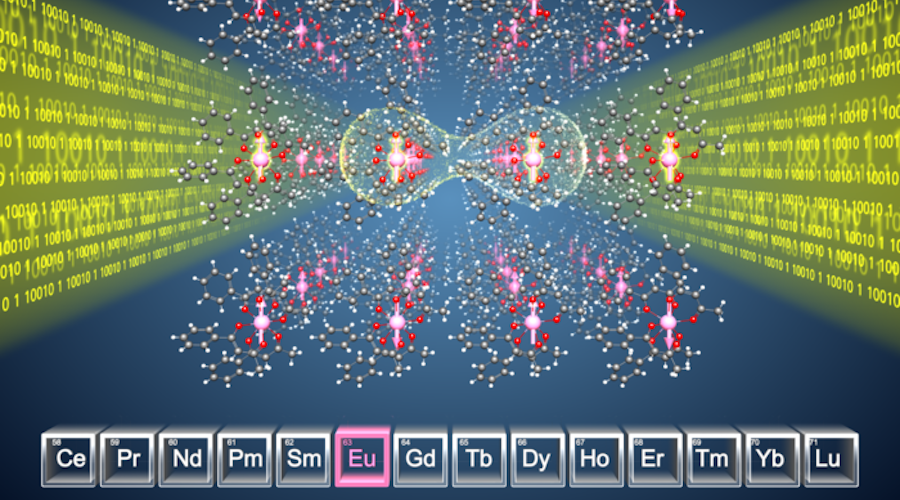Rare earths show potential for quantum communications, processors

New research by the Centre National de la Recherche Scientifique, l’Université de Strasbourg, the Karlsruher Institute of Technology and Chimie ParisTech-PSL has demonstrated the potential of a new material based on rare earths as a photonic quantum system.
In a paper published in the journal Nature, the teams behind the discovery explain that while quantum technologies promise a revolution in the future, they remain complex to execute.
As an example, they pose the issue of how quantum systems that can interact with light to create processing functionalities for information and communication through fibre optics are still rare.
“Such platforms must ideally include an interface with light as well as information storage units, which is to say a memory,” the scientists say. “Information processing must also be possible within these units, which take the form of spin. Developing materials that enable a link between spins and light on the quantum level has proven especially difficult.”
Despite such difficulties, they were able to successfully demonstrate the value of europium molecular crystals for quantum communications and processors, which is the result of their ultra-narrow optical transitions enabling optimal interactions with light.
According to the researchers, these crystals are the combined product of two systems already used in quantum technology: rare-earth ions such as europium, and molecular systems.
Rare-earth crystals are known for their excellent optical and spin properties, but their integration in photonic devices is complex. Molecular systems generally lack spins (a storage or computing unit), or on the contrary present optical lines that are too broad to establish a reliable link between spins and light.
In the scientific teams’ view, europium molecular crystals represent a major advance, as they have ultra-narrow linewidths. This translates into long-lived quantum states, which were used to demonstrate the storage of a light pulse inside these molecular crystals.
Moreover, they were able to obtain the first building block for a quantum computer controlled by light. This new material for quantum technologies offers previously unseen properties and paves the way for new architectures for computers and quantum memories in which light will play a central role.
More News
LME fines warehouse that stored fake nickel for 2022 mishap
Access World loaded out 24 tons of nickel cathodes from the warehouse between Oct. 18 and Nov. 16, 2022, apparently due to human error, the LME said.
April 01, 2025 | 09:17 am
Norway sovereign wealth fund to vote against Rio Tinto dual-listing review resolution
Norges Bank, the world's largest sovereign wealth fund, is the seventh biggest shareholder in London-listed Rio Tinto.
April 01, 2025 | 09:02 am
{{ commodity.name }}
{{ post.title }}
{{ post.excerpt }}
{{ post.date }}



Comments